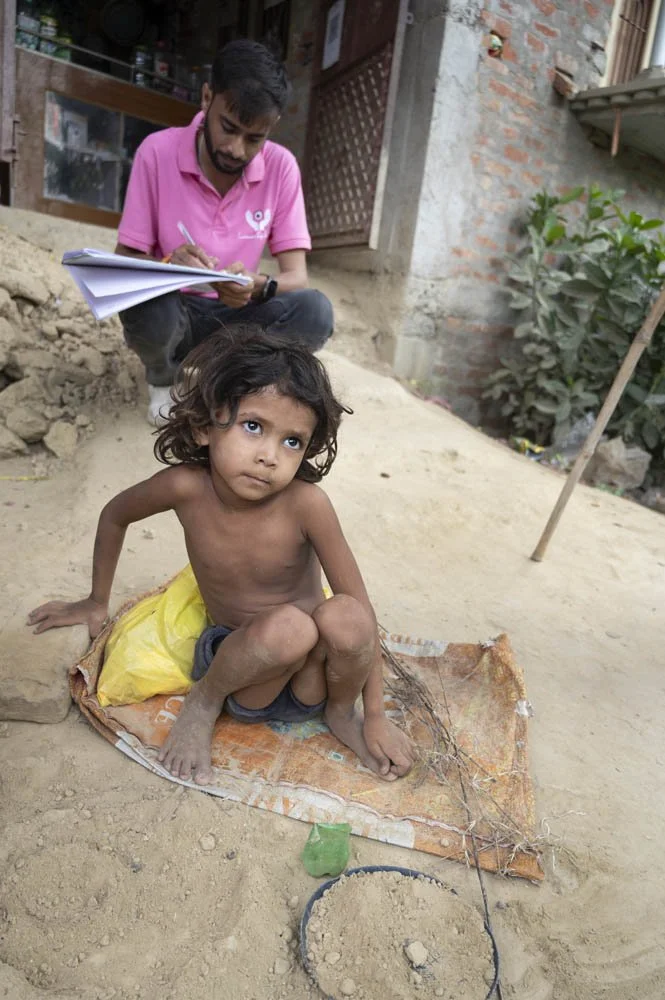‘Is anyone here dead?’
These were the words that provoked the only evident response to a brilliant speech by Indian ophthalmologist Dr Helen Nirmala Rao to an evangelical Christian gathering in Bihar. It was one of the highlights of my recent trip.
I will return to the speech and its significance later. But first let me tell you the back story.
I was away for the whole of June, thereby missing the Platinum Jubilee celebrations marking the Queen’s 70 years as a British monarch.
However, in Bihar, we celebrated another historic milestone – the Return of the Queen of Ophthalmology. Now aged 71, Dr Helen, as she is still known to villagers in Bihar, finally arrived at Patna airport to accompany us to her old stomping ground in the north-western part of the state where she had spent most of her working life.
When I saw her standing in front of me at Patna airport, dressed in a patterned blue salwar kameez, white mask hiding her lower face, eyes wrinkled in a smile behind big glasses, I thought it was a mirage. It was, in fact, a triumph.
In 2015 (!) I had stood in front of the pretty lake in the town of Motihari, Bihar with my friend and fellow-ophthalmologist Andy Richards. The water glistened in the sunlight, some fisherfolk cast their nets below its surface, the leaves of the huge banyan trees fluttered in the breeze. Of all our associated eye hospitals, the MHKS probably has the most picturesque setting. It is also just 50 kilometres away from The Duncan Hospital where Dr Helen’s Eye Department was delivering comprehensive eye services to the poorest patients from 1989 to 2009. And where we began our work in Bihar.
Now we wanted Helen back. Not just because she still had so much knowledge and experience to guide some of our current ophthalmic teams. But also because it was all getting just too exciting for her to be left out.
‘Fish. Helen loves to eat fish’ announced Andy on that day in 2015. ‘And somewhere decent to live.’ That, according to him, was all that it would take to get Helen back working in Bihar. He may well turn out to be right. Albeit it seven years later.
Bubbly young Babul, an ophthalmic assistant from Laxman Eye Hospital was part of the welcoming party. He was beside himself with excitement. He had read about Helen in my two books – in fact, he had helped translate into Hindi the first book A Runaway Goat. Now he was meeting her in the flesh.
I, in turn, was chuffed by Babul’s excitement, remembering that apart from my books there is currently no other written record of the achievements of this remarkable Indian ophthalmologist.
Driving over the River Ganges on the sweeping, modern JP Setu bridge, Helen remembered how in her early days boats were the only form of transport from south to north Bihar. The Patna to Muzaffarpur journey used to take 6 hours. We were there in less than 2. The boats haven’t changed though – wooden fishing vessels with sails, dredgers, wide cattle boats and a few small ferries. All these are still used to transport eye patients to the mainland from the diara, the islands that sit in the middle of the Ganges.
We headed north to Narkatiganj. Our journey was punctuated by telephone calls from Helen’s family in south India. They were seeing reports on TV and social media about riots and the burning of trains in Bihar. These protests were sparked off by something called the Agneepat scheme relating to army recruitment. Instead of a job for life with pensions etc. youngsters wishing to join the Indian army now were to be given only a 4 year tenure and only 25% of them would be eligible to apply thereafter for more permanent posts. Not a popular scheme.
Helen calmly batted away the worried calls with: ‘I am with Lucy. Nothing has happened so far. By God’s grace.’
I told her that she should remind the family that she had worked in a much scarier Bihar of old – when guns were routinely on the streets and it was the kidnap state of India. Helen laughed. And asked the driver Rakesh about the price of tomatoes in Bihar. (15 rupees a kilo if you are interested, compared to 120 rupees in the southern state of Andhra Pradesh).
At the DSN eye hospital at Narkatiagnaj Helen went into the operating theatre to watch Dr Sabit Hassan at work. He is a quick confident surgeon and the OT was purpose-built and fitted her own exacting standards. So she didn’t spend much time in there. Also – ‘ when I am in the operating theatre I never want to leave…it was always like that’ she told me afterwards. And I thought of how Helen used to operate from morn till night at The Duncan Hospital, head bowed in that uncomfortable position peering down a microscope, and dragging the heavy microscope across the floor as she moved from one operating table to another.
This daily routine eventually took its toll. Painful neck problems ended Helen’s operating days… but began our wonderful association. Second Sight surgeons stepped into her surgical shoes. Helen continued in her vital role of heading an eye department that never forgot that rural ophthalmology is not merely about cataract blindness and the quick fix of cataract surgery. All the eye diseases we are still treating now – from childhood blindness caused by malnutrition and Vitamin A deficiency, to corneal ulcers badly treated by quack doctors – were being treated back then. The halcyon days at Raxaul lasted until the eye department was shut in 2009.
Helen’s best and worst professional days probably happened at The Duncan Hospital. So of course we had to return there. The border town is just 43 kilometres from Narkatiagnaj but one of the worst roads in Bihar connect the two. Our hardy vehicle took a battering, driver Rakesh was sick (possibly on account of eating too many ripe mangoes) and we arrived late.
Greeting us at the gates were two nice nurses, Dorcas and Esther wearing the old fashioned white uniforms and caps still worn at mission hospitals. The Medical Superintendent, Administrator and some others also greeted us. It was all a little stilted as if no-one quite knew why we were there and what to do with us. The MS offered Helen a guided tour of the modern hospital. She was taken swiftly past her now derelict eye department but was shown the extensive construction work taking place to rebuild the entire original buildings.
‘There seems to be a lot of money’ commented Helen as we met briefly at the guest-house.‘ She recalled how the first eye patients had had to sleep on the floor between the beds of the General Surgery patients. Until Helen complained to the general surgeon (her husband Anand) and funds were found to build a separate eye ward. By the time Second Sight surgeons joined Helen each patient had their own bed with bright red blankets to keep them warm in the winter.
‘Can you ask if some of your eye department equipment is still here?’ I urged her. ‘I know of one eye hospital that really needs an extra slit-lamp.’
Helen asked the Medical Superintendent. He didn’t know. Perhaps it was in storage somewhere on the premises, perhaps it had been sent to another mission hospital. She enquired about the old sign, a giant painted eye which used to hang over the entrance to her department and which patients referred to as Dr Helen’s Eye. The MS had no idea about where this had gone.
‘It wasn’t anything…just of sentimental value’ muttered Helen looking, momentarily, a little fed-up.
She was not, however, there to brood. This was beautifully demonstrated the following morning when she was asked to speak to all the staff at Devotions, a morning gathering in the church.
I am not an evangelical Christian like Helen. She consults the Bible for all her guidance and teases me for relying ‘on instinct’ about what is right and wrong. Naturally her speech was centred around the Bible. That did not prevent it from being an extra-ordinarily inclusive, high-octane clarion call to every person sitting in that room to, basically, get off their backsides and work!
She admitted to a kind of rediscovery of the Bible during a bleak time after the death of her husband Anand. She had wondered why she was still alive. She urged those clutching Bibles in their hands to open the book and really understand the messages in the words, and how encouraging and revitalizing they could be. (Her actual words were ‘find Jesus on every page’. Mine is a secular interpretation). Then came the challenge to complacency.
‘How many people here are alive?’ she asked.
‘I don’t mean are you breathing, is your heart pumping…I mean really alive?’
Enlivened myself by this in-your-face approach to a very traditional Christian audience, I looked around for reaction. I saw blank faces amongst the serried ranks of nurses, doctors and hospital administrators.
‘Ok. Then let me ask. How many people here are dead?’
And that drew a murmur. She then went on to quote Genesis 2:15 – the first humans placed in the Garden of Eden to, yes, work and look after it; Acts 17:26 in which each person is said to have an appointed time in which to carry out their work; Revelations 2:12 in which it is made clear that reward will come according to the work each person has done.
Which brought her neatly round to informing The Duncan staff that she was back in Bihar ‘after such a long time’ because there was still so much work to do. And to excuse us hurrying away from Devotions she added – ‘My friend Lucy, who brought me back to Bihar, has so much work in so many different places.’
It took a lot of restraint on my part not to leap up from my seat and punch the air in victory. Before any celebrations, however, there were logistics to sort out. Fish and flats in Motihari.
Lucy Mathen






